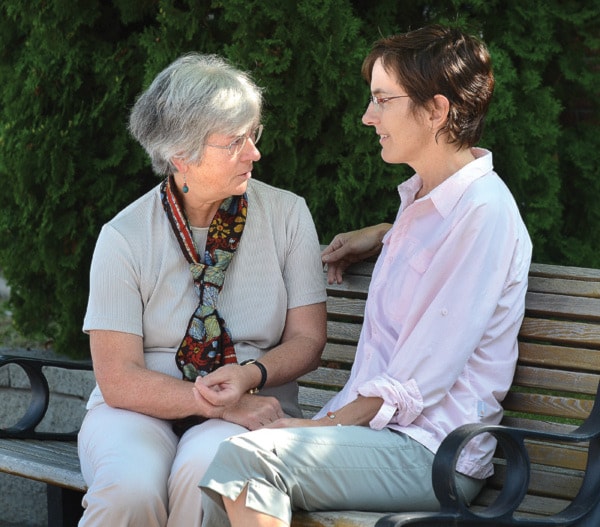Nobody should die alone and in pain.
Working on this premise, a multi-agency team is looking for ways to improve palliative/end-of-life care in the Shuswap.
And they are asking for the public’s assistance in doing this, first by completing a survey and then by attending a public forum to be held in November.
Recommendations that arise from this process will be assessed by a regional group comprised of Interior Health, the Division of General Practice North Okanagan (a physician’s group) and the province before being forwarded to the Ministry of Health for possible funding.
“Palliative care has been identified as an issue in the Shuswap,” says Dr. Adele Preto, a member of the local group. “They asked us to isolate where the problems are and where improvements can be made.”
Preto says that includes assessing the level of care, finding the gaps and getting input from everyone involved – doctors, nurses, hospice workers and members of the public – to arrive at best-care palliative practice.
“Everybody has the right to die in a dignified manner, not in pain and wherever they choose,” she says, noting the busy acute-care setting is not the best choice. “I think most people, given the opportunity, would rather die at home, but when that is not possible, we have to find the right environment and the right set-up.”
Preto says one has to be sensitive to the person’s need and provide support to family and friends as well as the patient — support that continues following the loved one’s death.
“The goal is to help people and their families live as well as possible until death.”
The principles being used include regarding death as a normal process and initiating palliative care early, while the patient is still receiving life-prolonging but not curative treatments.
“Palliative care is holistic. It respects the wishes of the patient and addresses not only the physical, but also the emotional, spiritual, social and physiological needs of the patients and their families in a culturally sensitive environment and is best provided in a team approach…”
Preto, who is also president of the Shuswap Hospice Society is joined on the local working committee by Dr. Joan Bratty, Renee Roberge, Interior Health manager community integrated health services, Sharon Whitby also from Interior Health, Claire Scott, Hospice Society board member, and Tracy Kirkman, secretary of the Divisional General Practice North Okanagan Shuswap.
Preto says a Canada-wide movement and interest by government in funding palliative care makes this a perfect time to talk about it.
“It’s something that needs to be addressed,” she says. “It’s good to have a talk about what we want to have and it’s better to do it when we’re not facing death.”
Preto says good palliative care can be given anywhere, another premise the members of the local group are working on together.
Now it’s time for members of the community to have their say.
“We need people to come on-board,” says Preto.
The survey to assess community opinion is now available in local doctors’ offices, the outpatient lab/community care office at the top of Tank Hill and online at www.surveymonkey.com/s/shuswappcare.
Hospital patients and their families will also be given an opportunity to express their opinions and concerns about palliative care in the area.
The information obtained from the survey will be for data collection purposes only. All survey responses will remain anonymous.
The deadline for survey completion is Aug. 31.
